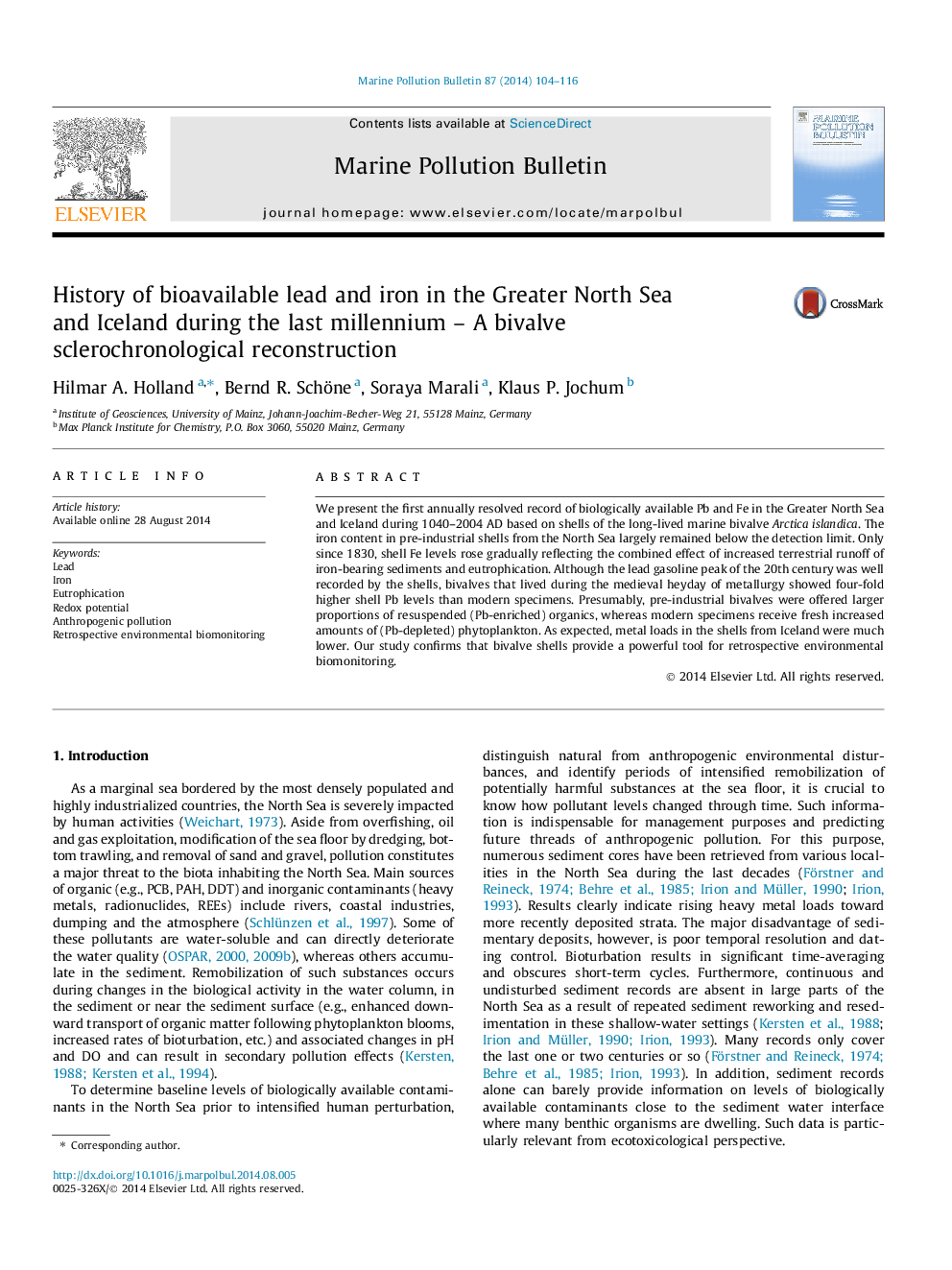| Article ID | Journal | Published Year | Pages | File Type |
|---|---|---|---|---|
| 6357623 | Marine Pollution Bulletin | 2014 | 13 Pages |
Abstract
We present the first annually resolved record of biologically available Pb and Fe in the Greater North Sea and Iceland during 1040-2004 AD based on shells of the long-lived marine bivalve Arctica islandica. The iron content in pre-industrial shells from the North Sea largely remained below the detection limit. Only since 1830, shell Fe levels rose gradually reflecting the combined effect of increased terrestrial runoff of iron-bearing sediments and eutrophication. Although the lead gasoline peak of the 20th century was well recorded by the shells, bivalves that lived during the medieval heyday of metallurgy showed four-fold higher shell Pb levels than modern specimens. Presumably, pre-industrial bivalves were offered larger proportions of resuspended (Pb-enriched) organics, whereas modern specimens receive fresh increased amounts of (Pb-depleted) phytoplankton. As expected, metal loads in the shells from Iceland were much lower. Our study confirms that bivalve shells provide a powerful tool for retrospective environmental biomonitoring.
Related Topics
Physical Sciences and Engineering
Earth and Planetary Sciences
Oceanography
Authors
Hilmar A. Holland, Bernd R. Schöne, Soraya Marali, Klaus P. Jochum,
